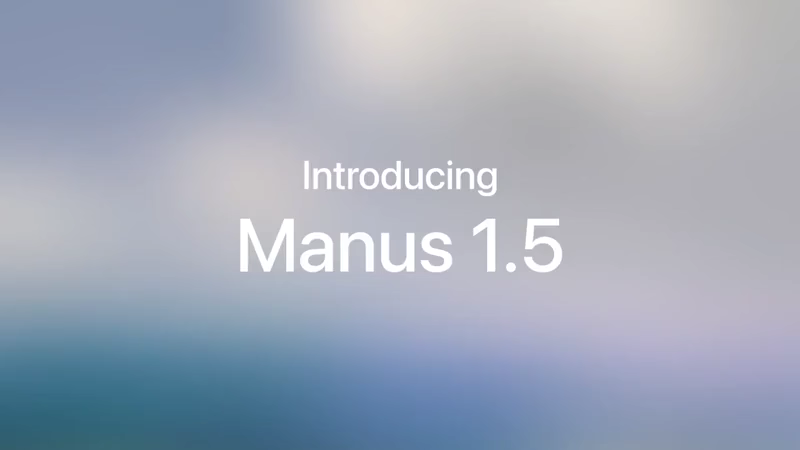
The world is now witnessing what many call the LLM war.
In the past two years, which have been defined as a technological arms race that began with OpenAI’s ChatGPT, soon saw competitors like Google, Anthropic, Meta and many more, creating waves of specialized AI agents. Each contender has tried to redefine what it means to interact with intelligence: from conversation and creativity to reasoning and autonomy.
Amid this crowded landscape, Manus stands out not by speaking better, but by doing better.
Where others focus on dialogue, Manus focuses on execution.
Unlike ChatGPT, Claude, or Gemini, which operate primarily as conversational models augmented with plugins or tool use, Manus positions itself as a fully autonomous agent system that can do many things simultaneously.
In other words, Manus doesn't want to be a talkative general purpose chatbot. Instead it wants to be an operator that can plan, perform, and complete tasks end-to-end, often without further human prompting.
And with the release of 'Manus 1.5,' this ambition goes next level.
For developers alike, this is like a dream, combining faster performance with broader capabilities that make it less of a language model and more of a digital co-worker.
We didn’t create a “website builder” feature. We enhanced the core Manus platform to master a new, complex domain.
This distinction matters.
It means the same agent that helps you research a topic or analyze data can now build you a custom web application to solve a specific… https://t.co/WXQGgvrnyx— hidecloud (@hidecloud) October 16, 2025
At its core, Manus 1.5 introduces a redesigned engine capable of handling complex, multi-step work. Internal metrics show an average task completion time dropping from 15 minutes to under 4, with a 15% gain in overall output quality.
If compared to its predecessor, Manus 1.5's main focus is speed, and an increased in reliability.
That improvement isn’t just theoretical; it translates into fewer failed operations, cleaner results, and an expanded context window that allows the system to stay coherent through long, intricate workflows.
Where earlier versions occasionally lost track of context, the new architecture keeps conversations and data persistent across multiple phases of a project.
Generate your full-stack website in one go.
Manus builds it, launches it, and debugs it automatically
No setup. No code. No hassle.
One prompt, endless possibilities.
Upgraded web app builder: https://t.co/KIl8KNWS6q— ManusAI (@ManusAI_HQ) October 16, 2025
What makes Manus especially distinct among its peers is its ability to build.
The 1.5 release marks the arrival of full-stack web development directly within the platform. Users can prompt Manus to generate complete, production-ready applications, from backend infrastructure and databases to user authentication and embedded AI components, then watch as the agent tests and debugs its own output.
It even handles deployment, analytics, and version control without requiring external tools. This is not a “website builder” bolted onto a chatbot; it’s a demonstration of how an autonomous AI can manage an entire development pipeline in real time.
Get notified instantly
Receive push & email alerts when someone signs up, submits, or takes action.
Never miss a lead. Never miss a moment. pic.twitter.com/RjTZ96jkHN— ManusAI (@ManusAI_HQ) October 16, 2025
Beyond just building things, Manus 1.5 extends its reach into collaborative work.
The new shared-session mode allows multiple users to co-develop with the agent simultaneously, while the built-in library stores every file, dataset, and artifact produced during a project. These features make it easier to treat Manus as a persistent team member rather than a one-off assistant.
In contrast, systems like ChatGPT or Claude excel in reasoning, creative writing, and natural conversation, but they depend heavily on human guidance and external integrations for complex execution. Gemini benefits from Google’s ecosystem and excels at multimodal understanding, yet remains tethered to its own data and product stack.
Manus, meanwhile, operates as an open execution layer: it browses, codes, analyzes, and deploys autonomously, using whatever resources a task demands.
Available now → Take action today. pic.twitter.com/UUEvmHkNq8
— ManusAI (@ManusAI_HQ) October 16, 2025
Still, the platforms ambitions come with trade-offs.
Reviewers note that large-scale tasks can strain system stability, and credit costs rise sharply with project complexity. It’s also not immune to the unpredictability common in emerging agent architectures, with some edge cases require human correction or verification. But its direction is clear: Manus is evolving from a text-based AI to an all-purpose automation system, bridging the gap between chat-driven intelligence and hands-off, autonomous creation.
In a field where most large models compete on how naturally they talk, Manus 1.5 competes on how effectively it works.
It signals a shift toward agents that don’t just understand instructions—they execute them, manage context, and deliver finished products.
Whether that approach defines the next chapter of the AI race remains to be seen, but Manus has made its move: an agent built not to converse, but to create.
